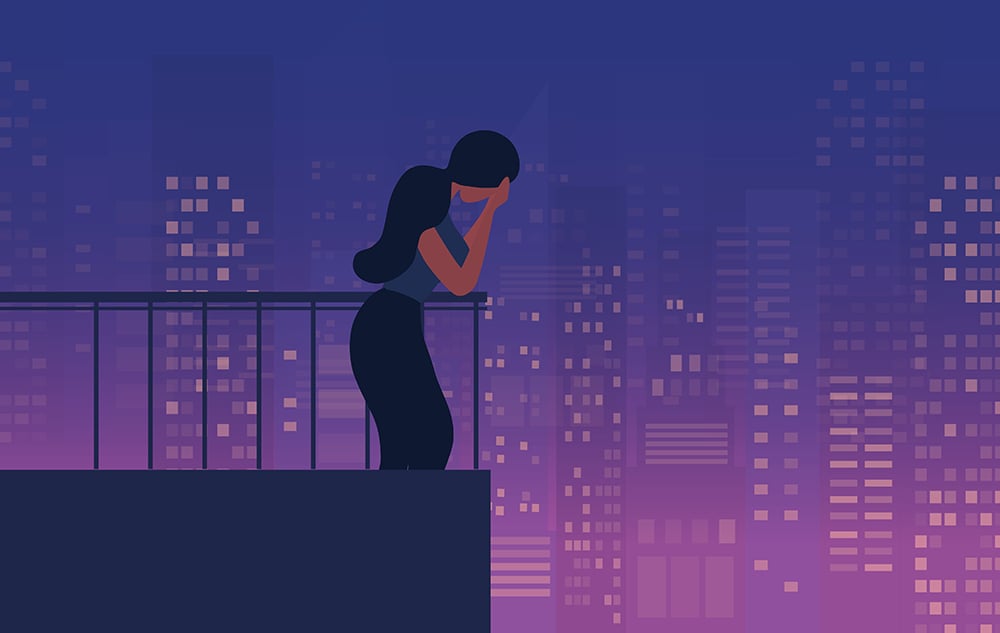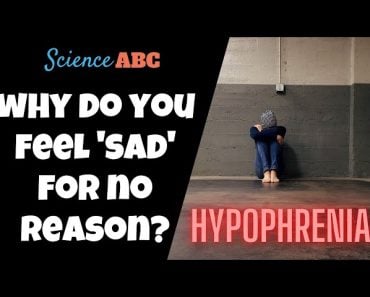Too tired to read? Listen on Spotify:
Many people have reported feeling a strange urge to jump off a bridge or cliff, even when they have no intention of actually doing it. Although the thought might feel intrusive or surprising, psychologists suggest that it could be our brain’s way of making us more alert to potential danger and encouraging us to step back from it.
We’ve all experienced it—those spontaneous thoughts that unexpectedly enter our minds, like mentally throwing a punch at someone who is annoying us. Or perhaps you’ve imagined what it would be like to jump off a balcony?
First of all, there’s no need to feel alarmed! These thoughts may seem unpleasant and intrusive, but are generally harmless unless you’re dealing with a more serious mental health situation.
What’s more interesting is why we would have such an urge in the first place…
Recommended Video for you:
The Call Of The Void
The mysterious attraction to the idea of leaping off a cliff is a widespread experience shared by many individuals. The French have given it a somewhat eerie term, l’appel du vide, meaning “the call of the void.” Some researchers went ahead and gave it a title they thought would be better suited as a scientific label, and called it the High Place Phenomenon (HPP).
Despite its prevalence, this experience can be a bit freaky, making some people wonder if it secretly means they want to hurt themselves, especially if they’ve dealt with those types of intrusive thoughts before.

Intrusive Thoughts And The High Place Phenomenon
Intrusive thoughts are uninvited thoughts, ideas, or images that are often unpleasant and can even be distressing. Intrusive thoughts have the uncanny ability to permeate our minds at any given moment—whether we’re daydreaming during a lecture or absentmindedly listening to a friend vent about their day. For some individuals, these thoughts aren’t just occasional… they’re actually quite constant and can disrupt their everyday routine.
The sudden urge to jump while standing on a balcony can also be considered an intrusive thought, given its unwelcome and suicide-oriented nature. However, it distinguishes itself in a significant aspect—unlike most intrusive thoughts that can arise anywhere, this urge requires a person to be physically present at a significant height. This feeling won’t surface during a shower or while stuck in traffic.

This inclination resembles a phobia, where a sharp sense of fear kicks in when you come across a specific stimulus. For instance, if you see a tiger outside of its cage, you might freak out, leading your body to react without you even thinking. On the flip side, watching a tiger chow down on a deer in a National Geographic show, even if it seems more horrific or graphic, might not trigger the same super-intense response. It just goes to show that our response is all about the situation or context.
Researchers questioned what was behind the phenomenon, so Dr. Jennifer Hames and her colleagues at the Department of Psychology at Florida State University conducted a study to better understand whether the High Place Phenomenon was linked to suicidal thoughts.
High Place Phenomenon – The Study
The researchers interviewed 431 college undergraduate students for the study. They looked at students who had previously had thoughts about suicide (suicide ideators) and those who haven’t (non-ideators).
The findings revealed that HPP was commonly reported across the entire participant pool, including students with no history of suicidal thoughts. More than half of the non-ideators admitted to feeling it at least once. However, it was even more common in the group with suicidal thoughts, about three-quarters of whom said that they had experienced the feeling.
If the urge to jump from a high place is not linked to suicide, what is the explanation?
The scientists proposed a theory: that feeling like you want to jump might be a mix-up in our brains, like mistaking a safety signal for a dangerous urge. They suggested that it’s tied to our survival instinct and suggested that fear has a significant role to play in this mental mix-up.
Misinterpreting The Safety Signal
Imagine casually strolling on a bridge when you instinctively step back or grip the railing tight. It’s like your brain’s survival mode kicking into gear. However, your conscious brain catches up quickly, and upon realizing that there is no genuine threat of falling, it endeavors to generate a logical explanation for what happened.
You might find yourself thinking, “Did I just want to jump off that bridge?” This altered perception of the situation introduces a notion in your brain that wasn’t previously present. However, it’s not some secret wish to end it all. It’s more like your brain doing a double take in response to its own survival instincts.

Therefore, if you’ve ever experienced HPP, it really may just be your brain’s way of saying, “Hey, I really want to stay alive.” However, it wouldn’t be wrong to say that HPP is a complicated phenomenon, and is likely tangled up with other psychological factors, the two major ones being anxiety and impulsivity.
Role Of Impulsivity In HPP
Let’s break down how impulsivity fits into the whole HPP phenomenon; it’s not a straightforward connection. Turns out, there’s a tendency to connect impulsivity with thoughts that lean toward being suicidal, but it’s not a direct link.
According to the interpersonal-psychological theory, impulsive individuals might be more risk-prone. This somehow builds up a fearlessness towards pain or getting hurt. Now, if a thought about ending things comes up, they might be more likely to act on it because they’re not as freaked out by the idea of pain or injury.
However, the development of this fearlessness is a gradual and adaptive process that requires repeated exposure to painful stimuli or situations. It’s not a quick switch. Thus, impulsivity is more like the force that lays the groundwork for more serious thoughts, even though it’s not the main purpose.
The results from the Hames et al study suggested that while they are distantly related, suicidal ideation and impulsivity may have a positive association with how HPP is experienced.
Anxiety Sensitivity Affects HPP Experience
The second major player that influences HPP experience is anxiety sensitivity. It is characterized by a fear of symptoms related to anxiety, thinking they could lead to something truly bad. For instance, an elevated heartbeat might trigger the fear of a heart attack, while panicking could evoke the fear of fainting.

Hames discovered that individuals with heightened anxiety sensitivity are more prone to experiencing HPP. The rationale behind this connection may be that those with elevated anxiety sensitivity are more inclined to misinterpret environmental stimuli, leading to a more pronounced physiological response.
Should You Be Concerned?
In most instances, the occurrence of HPP is not a cause for concern and does not signal anything serious or significant. Instead, it simply indicates that your survival instincts are functioning as they should. There is currently no evidence suggesting that HPP, when experienced in isolation, is linked to any mental health condition or increased risk of self-harm.
However, it’s worth noting that despite its prevalence, the High Place Phenomenon remains relatively understudied. The boundaries between HPP and suicidal ideation require further clarification. Therefore, if you find that HPP becomes frequent or obsessive, it may be prudent to seek assistance and engage in a conversation with a therapist. Taking this step can provide valuable insight and support to better understand and manage your experiences.
References (click to expand)
- Teismann, T., Brailovskaia, J., Schaumburg, S., & Wannemüller, A. (2020, September 30). High place phenomenon: prevalence and clinical correlates in two German samples. BMC Psychiatry. Springer Science and Business Media LLC.
- Hames, J. L., Ribeiro, J. D., Smith, A. R., & Joiner, T. E., Jr. (2012, February). An urge to jump affirms the urge to live: An empirical examination of the high place phenomenon. Journal of Affective Disorders. Elsevier BV.
- Mann, J. J., Waternaux, C., Haas, G. L., & Malone, K. M. (1999, February 1). Toward a Clinical Model of Suicidal Behavior in Psychiatric Patients. American Journal of Psychiatry. American Psychiatric Association Publishing.
- Van Orden, K. A., Witte, T. K., Cukrowicz, K. C., Braithwaite, S. R., Selby, E. A., & Joiner, T. E. (2010). The interpersonal theory of suicide. Psychological Review. American Psychological Association (APA).
- Deacon, B., & Abramowitz, J. (2006, January). Anxiety sensitivity and its dimensions across the anxiety disorders. Journal of Anxiety Disorders. Elsevier BV.
- Intrusive thoughts when you're around high places? What it ....













